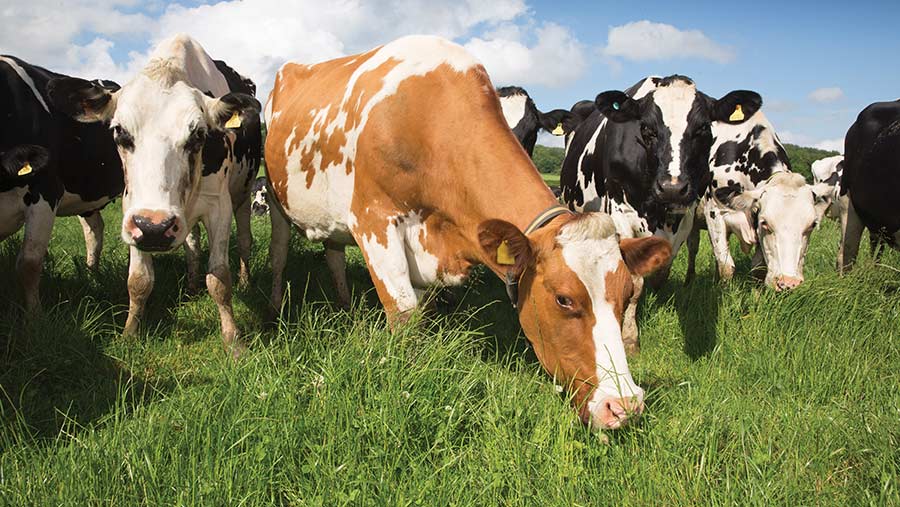Trialling pasture management methods ‘key’ to protecting soils
 © Tim Scrivener
© Tim Scrivener Set-stocking is easy, it gives animals choice, and it is cheap because no investment in infrastructure is needed, yet its major downside is constant overgrazing, says LIC consultant Bess Jowsey.
“Animals can choose where to be, in shade or shelter, but there is no chance to replace energy in the plant root stock. Livestock keep grazing the first leaf before it’s had a chance to photosynthesise,” she explains.
Bess points out that set-stocked fields have 33-50% lower productivity than rotationally grazed paddocks.
See also: Rotational grazing allows farmer to up stocking rate by 40%
One step better, she says, is simple paddock grazing where livestock graze one field and move on in a rotation of up to 10 days.
However, although this option is relatively easy and inexpensive – and grows more grass – regrowth can be grazed, which affects overall productivity.
“[Full] rotational grazing where you measure and monitor growth, allocate grass, and move every one to two days means you never regraze regrowth and grass has at least 21 days to recover.”
Infrastructure
The downside is the infrastructure needed, from dividing fields and upgrading water supplies to installing tracks to protect soils from regular cow traffic.
However, by growing more grass, less supplementary feed needs to be bought.
The Achilles heel, adds Bess, is the use of fertiliser to make this system work. Strategic applications of manufactured nitrogen would benefit regenerative agriculture, she says.
“A step on from this is mob- or cell-grazing, where livestock are given a fresh area every 12 hours and moved at least once a day.
“The mentality is also to go into higher covers and leave higher residuals: graze one-third, leave one-third and trample one-third – and usually with multispecies [swards],” she says.
Unfortunately, there is no research to back up the belief that mob-grazing gives leaves a chance to photosynthesise and roots to grow deeper, while surface trash protects soil from sun, rain and erosion, she says.
“You have to trial things on your own business and learn what works and fails, and tweak accordingly. Give it a go and find other farmers who are doing it, as research seems to be behind,” she advises.
Bess Jowsey was speaking at the recent Down to Earth regenerative farming event in Somerset.
